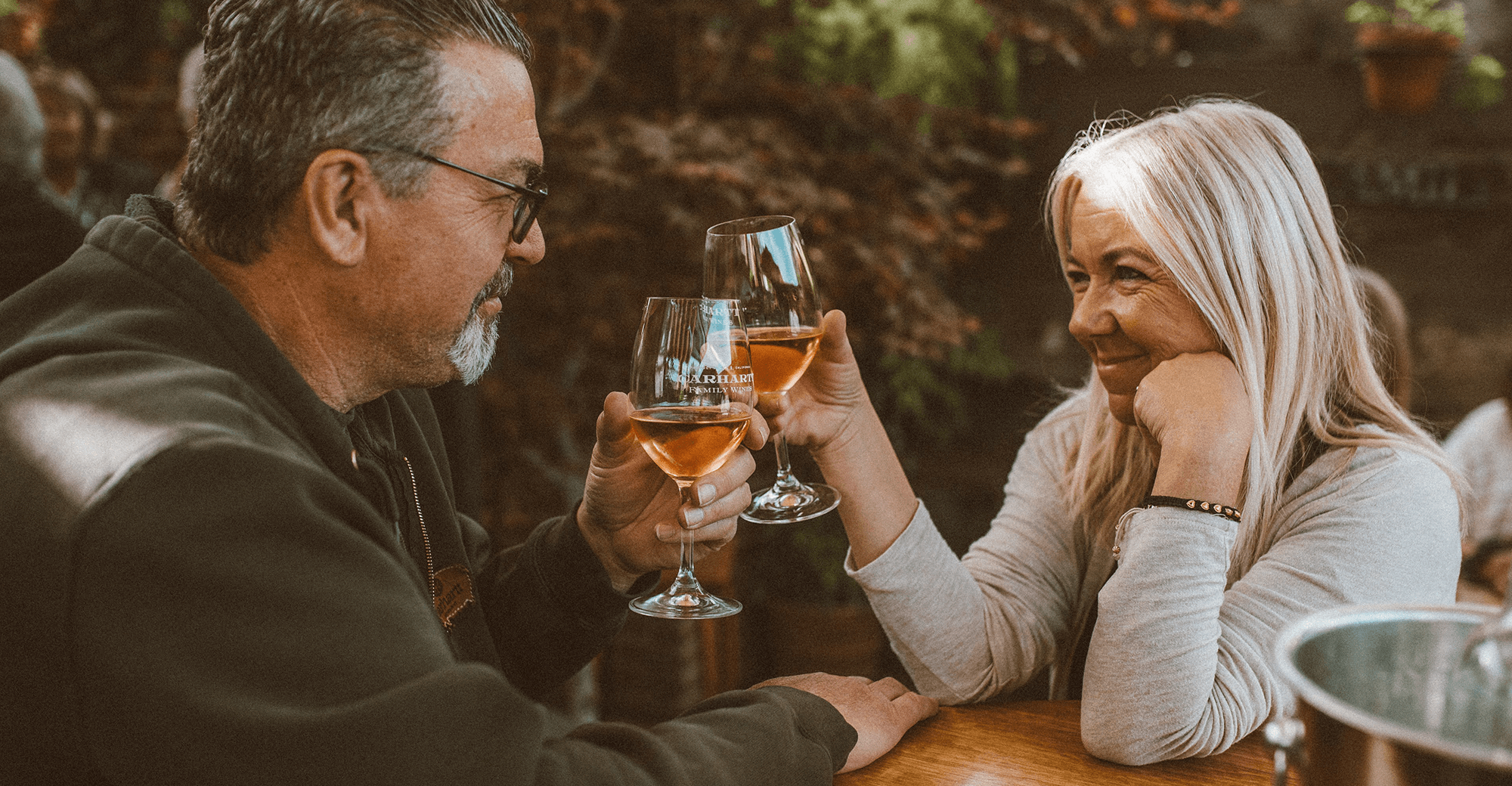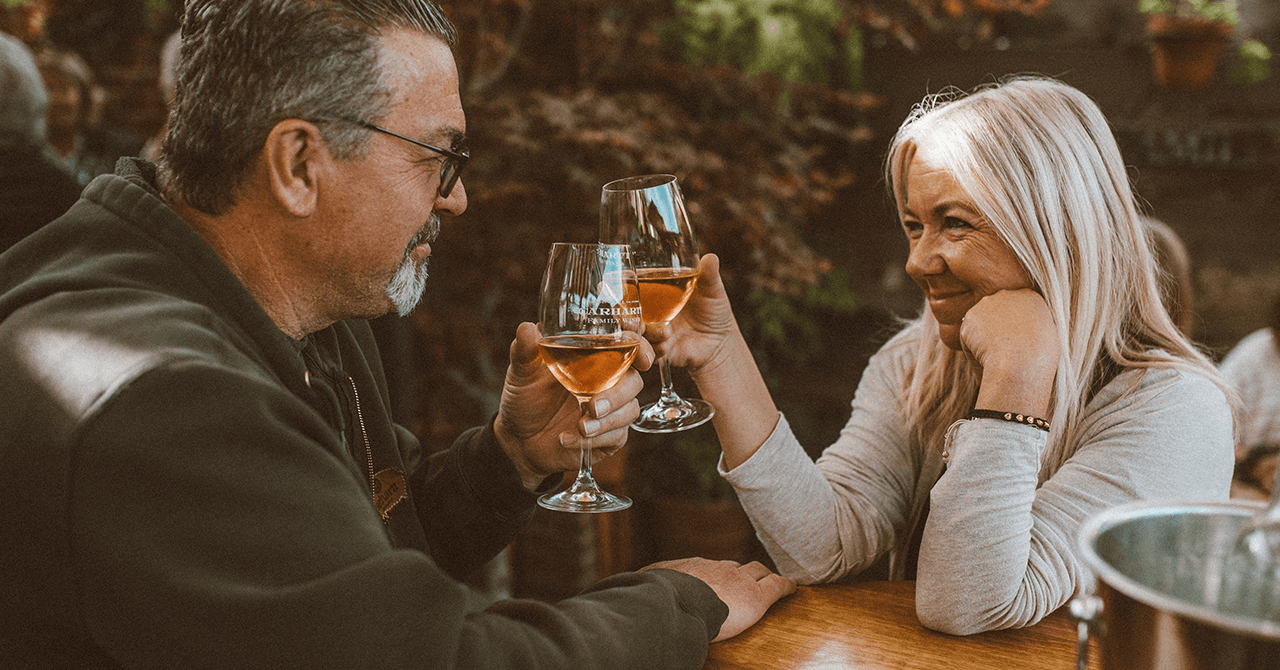

With its blush-toned hue and fruit-forward flavors, rosé has surged in popularity worldwide in the past few years, making its mark as a spring and summertime staple. At Carhartt Family Wines, we’ve recently released our 2021 Chase the Blues Away Rosé in anticipation of the season of backyard BBQs, beach days, and picnics. Rosé has been produced around the world for quite some time now, but we realize some of you might not know exactly how this wine is made.
Today, we’ll walk you through the basics of rosé production and give you some ideas for maximum enjoyment. Before you start reading, we recommend that you get comfortable, pour yourself a glass, and let the magic transport you into the vineyard!
While some people think that rosé is a blend of white and red wine, rose is actually made from red grapes, so technically a red wine, but one that is made in a more similar way to that of white wine. Like a white wine, rosé only spends a minimum of time on its skins, and it is this reduced skin contact that gives rosé its pinkish hue and its lighter body and flavor profile. Because the resulting color depends on the length of time the skins are in contact with the juice, rosés can vary from very light pink to salmon to pale red.
Rosé can be made from almost any red grape varietal, with Pinot Noir and Grenache being two of the most common. At Carhartt Family Wines, our Chase the Blues Away Rosé is produced using 100% Grenache grapes.
Harvesting grapes for rosé production usually occurs a bit earlier in the season than for our red wines. This is done for two reasons: we want to preserve and maintain the natural acidity present in earlier harvested grapes- and to ensure that the sugar (Brix) content is lower, thus keeping our rose at a lower alcohol percentage when finished.
An interesting note about rosé is that there are actually 2 ways of making it – the direct press method and the saignee process.
Direct press means that the grapes coming into the winery go fairly soon into the press, then the juice into a tank for settling and fermentation. In order to achieve the desired color for a winery’s particular rosé, the grapes can remain on their skins before pressing for anywhere from one hour to 12 or even 24 hours, keeping in mind that the longer the skin contact, the darker the rosé.
The saignee method involves the removal (bleeding off or draining off) of a proportion of juice from a tank of crushed red grapes. For the red wine, this technique increases the amount of skins relative to juice in the tank and typically results in a concentration effect, producing wines with more color, structure, and tannin. As far as the rosé goes, it might result in a little bit darker color, depending on how quickly the winery can bleed off the juice from the bin of red grapes. The other factor with a saignee rosé is that because those red grapes were harvested for red wine, they tend to be riper and with a higher Brix level, thus most likely resulting in a higher alcohol wine. However, neither process is better or worse, just a different method.
Once the juice is ready (either from the press or the saignee), it goes into a tank (usually stainless steel), cold settling for a few days, and then racked off its gross lees into another vessel to begin fermentation. At Carhartt, we have used both stainless and neutral oak barrels for fermentation and later aging. Aging, itself, is rather short-lived – usually 6 months or so before bottling time. We want to capture and express the wine’s youthful, bright, and refreshing characteristics!
As with every other wine, the aromas and flavors are subject to the growing season, location of the vines, soil composition, and so much more. However, as a general rule, rosé wines are similar in profile to a light red wine, but with much brighter, fresher, and citrusy notes. For example, our Chase the Blues Away Rosé offers aromas of strawberry, kiwi, and white flowers, followed by flavors of nectarine and minerality. It’s a crisp, fresh, and fruit-forward tasting experience that is as equally beautiful as it is complex.
Rosé’s delicate personality requires specific storing instructions to preserve the quality and flavors. Keeping your rosé (or any wine!) in a cool place (ideally 55-60) without sun exposure will prolong the wine’s life and avoid any issues with altering the intended flavor. We highly recommend that you serve rosé ice cold, which means sticking it into the fridge or an ice bath 2-3 hours before serving.
Crisp and refreshing rosé is one of the most food-friendly wines of all, making it a perfect addition to any meal. With its mouth-watering acidity and fruit-forward flavors, it pairs beautifully with seafood, light appetizers, backyard barbecues, and that deluxe charcuterie board you have handy. Try it with fresh pesto, tuna tartare, or even Cioppino- we can promise that rosé will become your next go-to this summer! To snag a bottle of our rosé, head over to the SHOP page or VISIT US at the tasting room!
Join our email list and get 10% off your next purchase!
New Customers Only